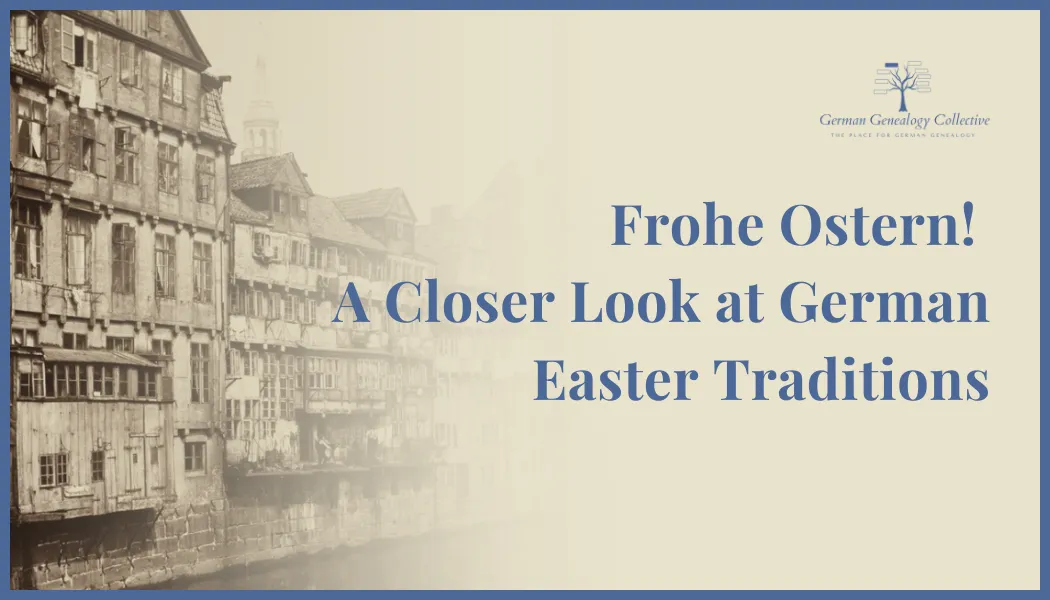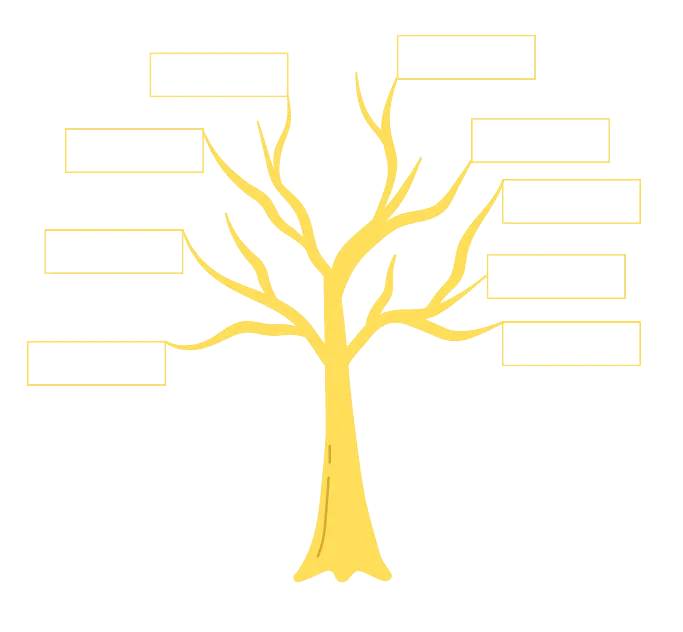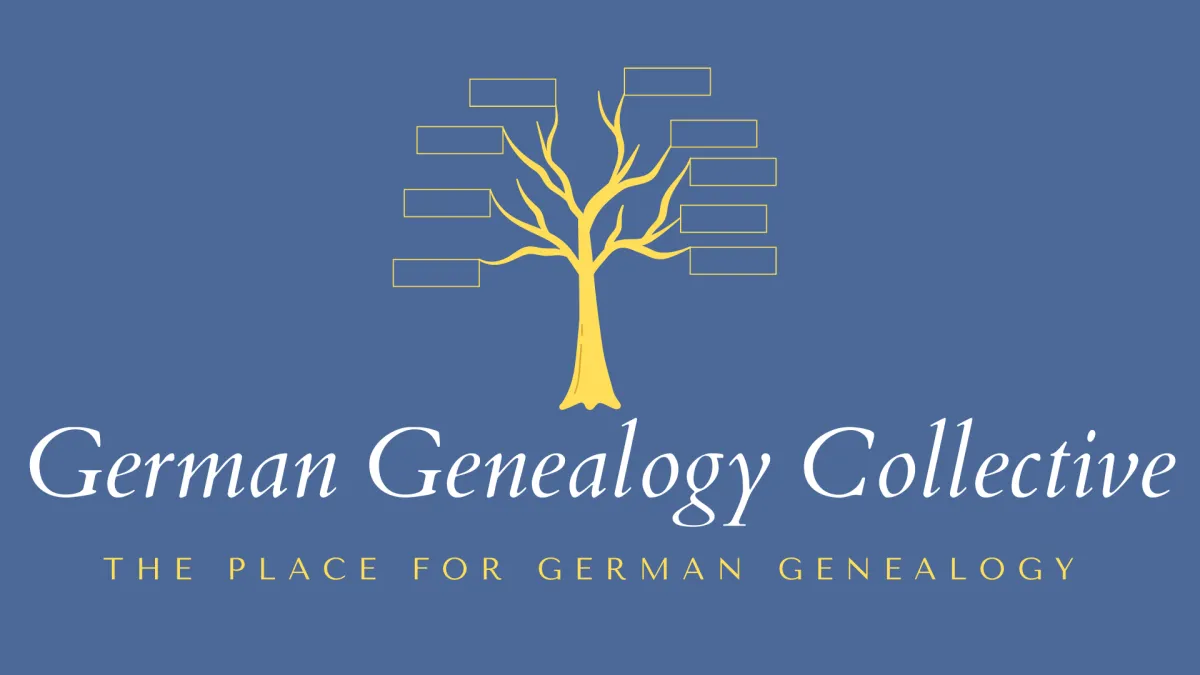

Check Out Our Blogs
Check Out Our Blog

Frohe Ostern! A Closer Look at German Easter Traditions
Frohe Ostern! A Closer Look at German Easter Traditions
As a professional genealogist, I find that seasonal traditions offer some of the most personal insights into how our ancestors lived and celebrated the passage of time. Easter in Germany, like it is around the world, is one of those times when ancient and religious customs, and family practices beautifully intertwine—and many of these traditions are carried on to this day.
Whether you grew up in Germany or have German ancestors, you’ve likely encountered some of these festive traditions. But where do they come from? And what do they tell us about the people who passed them down?
Let’s take a closer look at Easter in Germany - Ostern - and the traditions that have carried its message of light, life, and rebirth through the centuries.
🌸 Ancient Roots and Christian Symbolism
The word Ostern may trace back to Eostre or Ostara, the Germanic goddess of spring and fertility. Long before the arrival of Christianity, Germanic tribes marked the arrival of spring with Pagan festivals dedicated to her. Symbols like eggs and hares - representing fertility and new life—were already part of those early celebrations.
With the spread of Christianity, many of these customs were adapted and reinterpreted. The egg, once a symbol of new beginnings, came to represent resurrection. ‘Light’ was a central theme of these Pagan spring festivals, but became a symbol of the victory of Christ over death with the Christian celebrations of Easter.
🔥 Saturday: Osterfeuer – A Fire for Spring
One of the most visually striking Easter traditions in northern Germany is the Osterfeuer, or Easter bonfire. On Holy Saturday, people gather around bonfires, often on hillsides or in open fields, originally used as a method to drive away the darkness of winter and encourage the sun to return.
In Christian contexts, the Easter Vigil begins with the lighting of a small fire outside the church. The Paschal candle (Osterkerze) is blessed and lit from this fire. It is then carried into the darkened church to symbolize Christ as the light of the world.
Even without its religious significance, the ritual of the Osterfeuer remains a big part of Easter celebrations in northern German communities, including here in Hamburg. It is both a social event and a seasonal marker: winter is over, and spring has come.

🐣 Sunday: Egg Hunts and Generous Surprises
Easter Sunday is the heart of the celebration, especially for children. It's the day when the Easter Bunny (Osterhase) makes his appearance - hiding colorful eggs, chocolates, and small gifts in gardens or inside the home.
What many outside Germany may not realize is that Easter Sunday is second only to Christmas in terms of the gifts children receive. While they’re typically smaller than Christmas presents, the excitement comes from the hunt: children must search high and low for eggs and goodies that have been hidden by parents or older siblings. It’s a playful and long standing tradition with the earliest the earliest references to the Easter Bunny coming from 17th-century Germany.
🥚 Eggs, Trees, and Nests
Eggs are central to Easter in Germany, not just as treats but as decoration and symbolism. Painting and dyeing eggs is a beloved activity that people do in the days leading up to Easter. These eggs may be eaten, of course, but many are solely for decoration, carefully painted and then hung on blossoming branches indoors or on Easter trees (Ostereierbäume) in gardens.
In some regions, especially in Franconia and Bavaria, the tradition expands to public fountains, Osterbrunnen, which are adorned with garlands, ribbons, and thousands of painted eggs. What began in the early 20th century has now become a source of local pride, with entire towns competing to create the most elaborate displays.
Children also build Easter nests from moss and flowers, placed outside in the hope that the Osterhase will come during the night and fill them with surprises.
🌿 Green Thursday to Easter Monday: A Holiday Full of Meaning
Each day of the long Easter weekend carries its own traditions:
Gründonnerstag (Green Thursday): On Maundy Thursday, it’s customary to eat green foods such as spinach or fresh herbs, symbolizing renewal and the end of Lent. The name’s exact origin is debated, but the practice of eating “green” remains.
Karfreitag (Good Friday): A public holiday and a day of reflection. It’s marked by silence and restriction; public dancing is prohibited, and many attend church services. Fish is a traditional meal served on this day, as a symbol of fasting.
Karsamstag (Holy Saturday): This is when Osterfeuer are lit in many regions, particularly in the north.
Ostersonntag (Easter Sunday): The culmination of the Easter celebrations, the best day of the holiday - gifts are found, eggs are hunted, and families gather for a festive meal. The lamb is a symbol celebrated on this day, either with meals centred around lamb or sweet cakes in the shape of lambs.
Ostermontag (Easter Monday): A relaxed public holiday, traditionally spent outdoors. Families go on Easter walks in the countryside, visit the decorated fountains, or enjoy a second family meal. A day to appreciate the beauty of Spring.
🧬 What These Traditions Tell Us About Our Ancestors
Easter in Germany is not just about Easter egg hunts and decorated fountains – it is a reflection of the traditions, beliefs, and rituals celebrated throughout history. In researching family stories, I find that the customs we follow today are remarkably similar to those practiced by our great-grandparents - and theirs before them. For us genealogists, these traditions provide important context to our research. They show us how these people lived and understood the changing seasons, the celebrations they enjoyed, what they ate, how they structured their calendars to include these seasonal and religious celebrations. Partaking in these festivities ourselves identifies how important these traditions were to these individuals personally, in the community and nationally. This identifies the continuity between the past and the present as they have been carried on for hundreds of years, passed down through the generations.
Frohe Ostern to you and your family! May this season of light and renewal inspire your research and reconnect you with the lives and traditions of your ancestors.
You want to explore more German (holiday) traditions and your family's story?
You're in the right place—and you're not alone.
Join the German Genealogy Collective (GGC) and connect with fellow researchers uncovering their German roots. Our live Q&As, expert-led sessions, and friendly community ensure you'll feel right at home.


German Genealogy Collective
THE PLACE FOR GERMAN GENEALOGY
Andrea Bentschneider

©2024 German Genealogy Collective, All Right Reserved | Terms & Conditions
